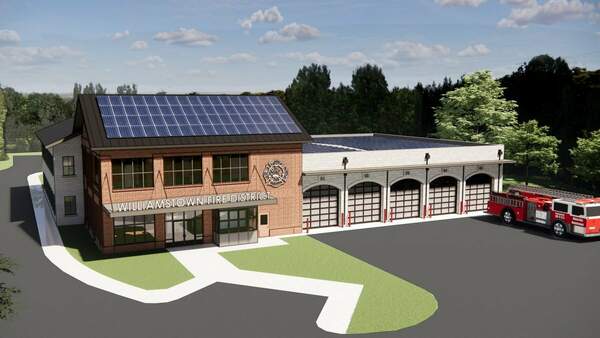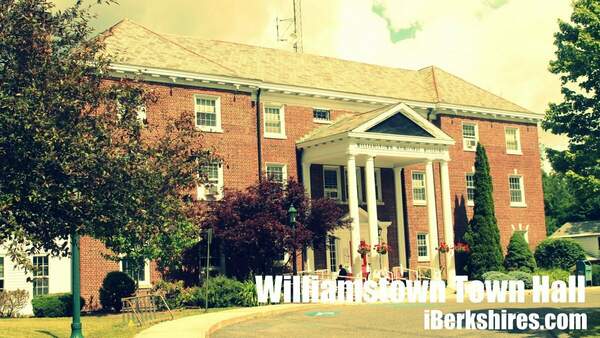Williamstown Building Commissioner Addresses Economic Development Panel
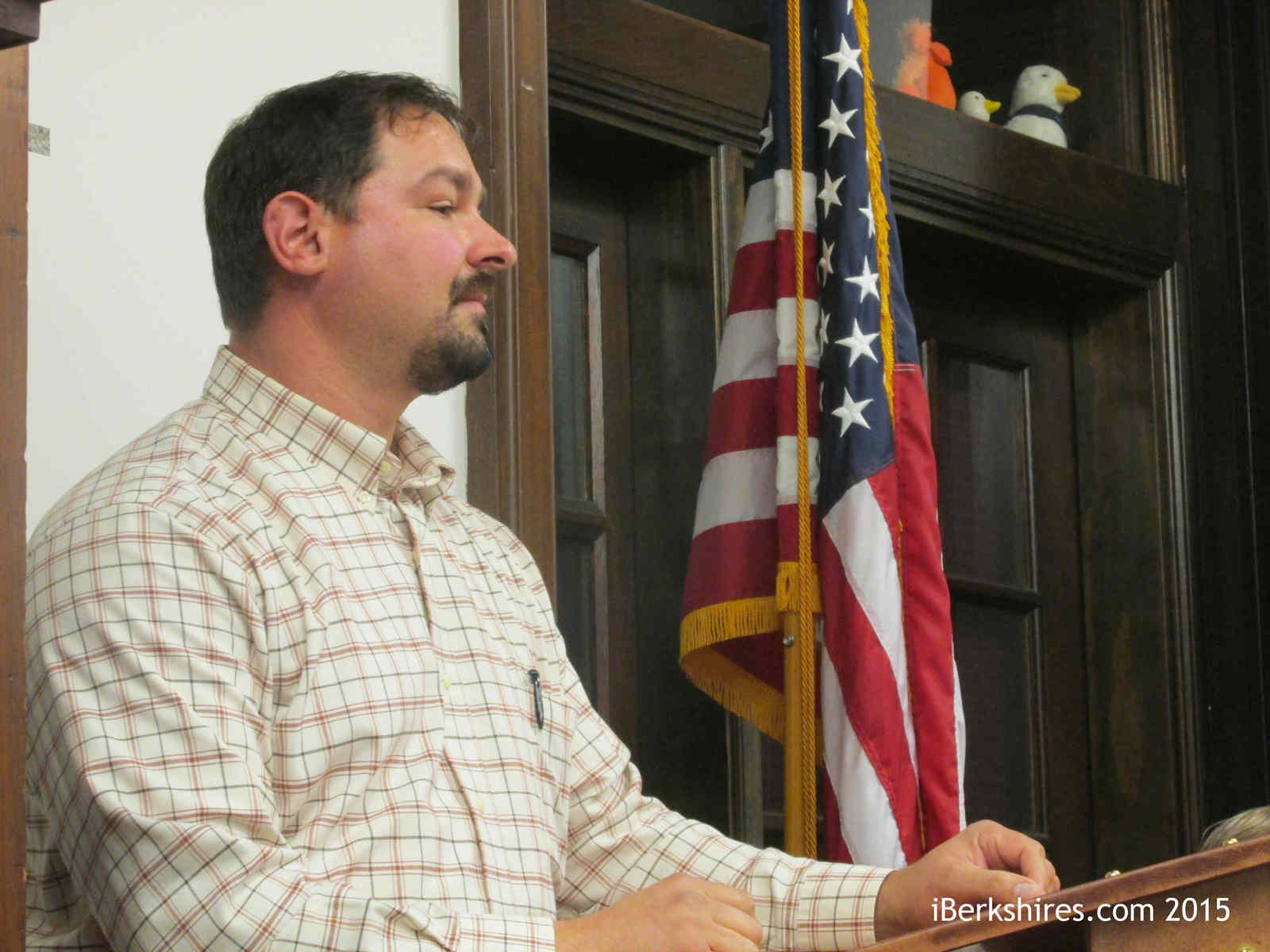 Building Commissioner Ryan Contenta addresses the town's Economic Development Committee. Building Commissioner Ryan Contenta addresses the town's Economic Development Committee. |
WILLIAMSTOWN, Mass. — The town's building commissioner on Monday refuted the notion that his office is an impediment to economic development.
When the ad hoc Economic Development Committee this spring sought input from residents, a common complaint was that Town Hall needed a "more favorable atmosphere for business."
At Monday's meeting of the EDC, Building Commissioner Ryan Contenta and Community Development Director Andrew Groff appeared to talk about the town's application of Massachusetts building codes.
"The state building code is just that: a state building code," Contenta said. "It doesn't change from town to town."
Contenta, who has worked for the town for 14 years, told the committee his job is to make sure work done in Williamstown meets the criteria established by the state — criteria that are designed to ensure the safety of building occupants.
"We spend most of our time in a built environment," Contenta said. "Life safety is very important in a built environment. Our goal is to educate people about life safety in a built environment."
Contenta said education is the key to helping people understand that neither the building code nor its application is "anti business."
"One of the biggest things we've been promoting is communication," he said. "If you want to start a business, one of the departments you have to see is the Community Development department. It's the responsibility of the developer or the person who wants to start a business to reach out to us so we can help them."
The commonwealth, also, has recognized the need for better communication with building contractors, Contenta said. A few years ago, Massachusetts began requiring continuing education for the construction supervisors' license renewal.
Groff agreed with Contenta that communication is they key and told the committee that the building inspectors' work sometimes takes the blame for regulations that are not part of the building code at all.
"What we talked about at the last meeting — about zoning and land use restrictions," Groff said. "There are some blurred lines for some people between that and the building code. Once you get to the building code, the subjectivity is taken away. Once you're at that point, you're able to proceed."
Contenta said his office finds violations in contractors' work on a daily basis but usually the corrective actions require minimal cost.
The frequency of those violations gave some members of the committee pause.
Committee member Paul Harsch praised Contenta for properly applying the state code but suggested that the town's thorough enforcement may lead to a perception that the town is less business friendly than others.
"We have excellent people working in this building," Harsch said. "One of our issues is ... there's nothing that gets past our building department. In Boston or Newton or Springfield, they're probably overwhelmed.
"We have a very conscientious department ... so things are scrutinized more frequently than is possible in a metropolitan area."
Committee member and Selectman Andrew Hogeland asked whether the town had reached out to local building contractors to discuss the inspection process. Contenta said the town invited contractors in for such a dialogue a couple of years ago.
"I can tell you some of the guys who showed up ... and it was absolutely nobody we have problems with," Contenta said. "The people who generally complain about our department did not show up at the meeting."
In other business on Monday, the committee heard from three non-profit groups working to promote the town and the region.
The president of the Berkshire Visitors Bureau, one of the principals of the
destinationwilliamsown.org and the executive director of the Williamstown Chamber of Commerce each explained how her group's efforts help spur the local economy.
Lauri Klefos of the BVB told the committee her organization's emphasis is on drawing visitors from outside the region. The bureau puts about 80 percent of its $1.3 million budget into advertising beyond the Berkshires — principally in the Boston and New York metropolitan markets.
She also said the visitors bureau has opportunities for local communities to partner with it and encouraged Williamstown to consider doing so.
She cited the towns of Lenox, Lee and Stockbridge and the cities of North Adams and Pittsfield among those who have spent money to support the BVB and buy ads on its home page,
www.berkshires.org.
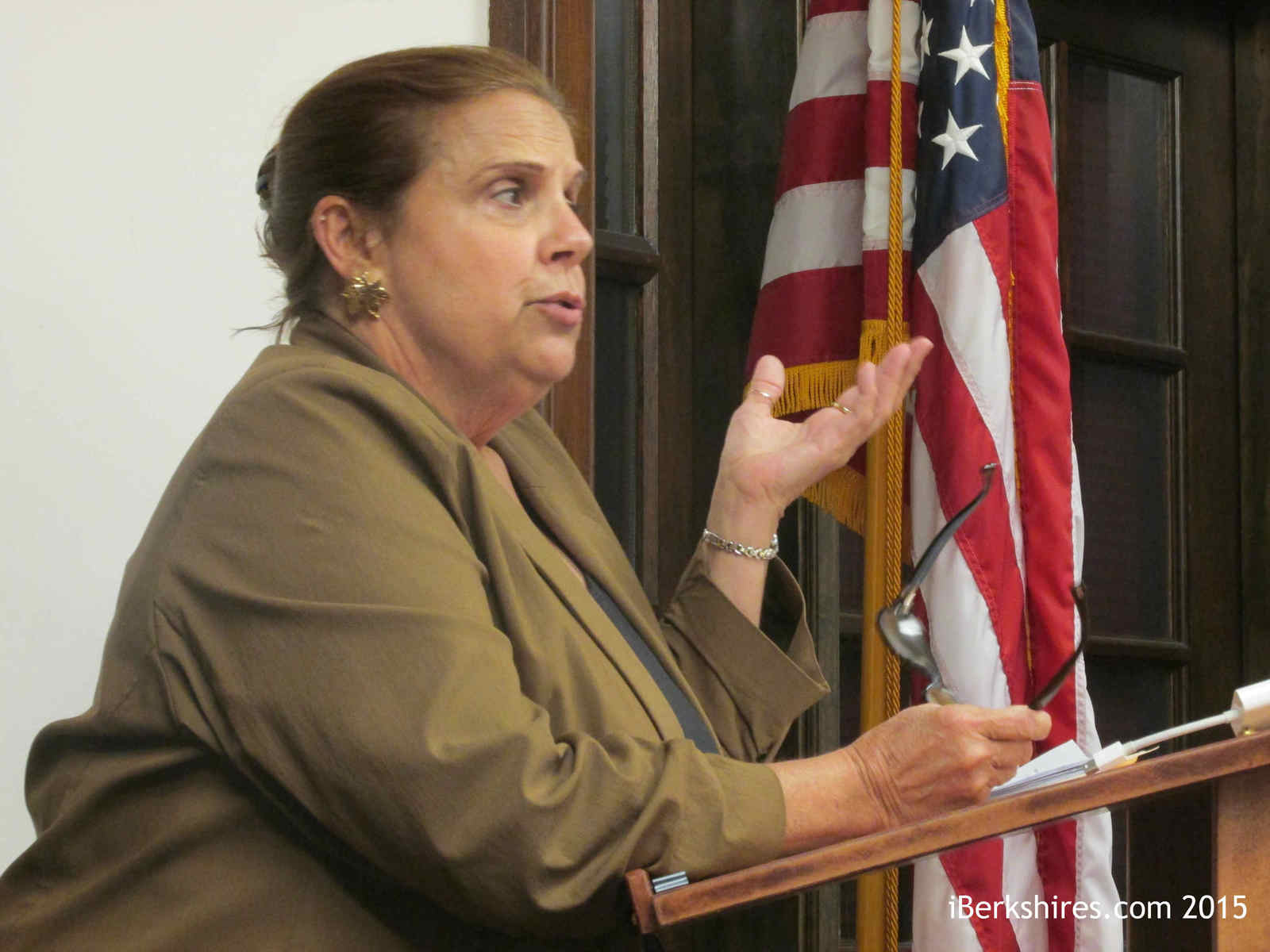 |
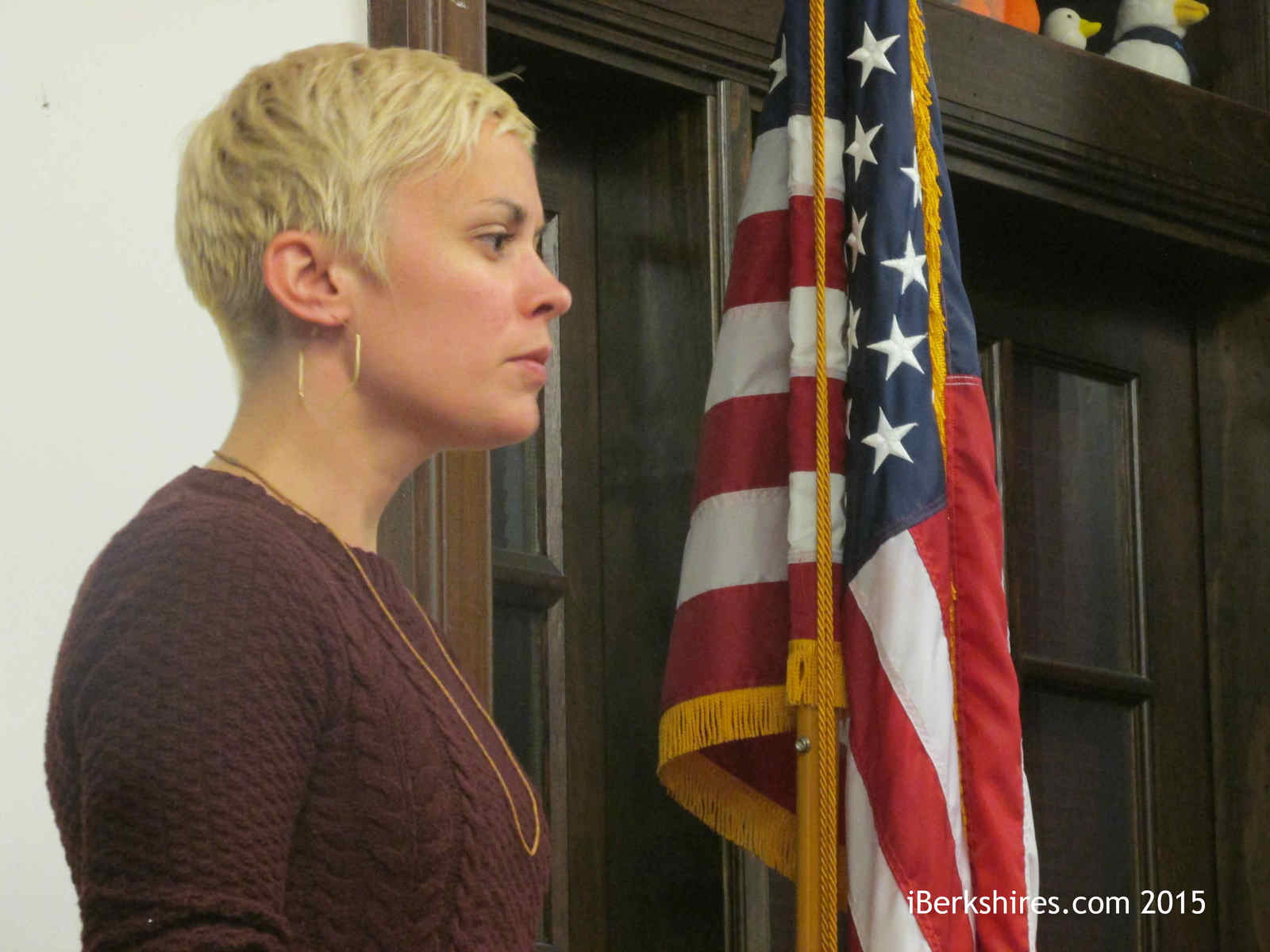 Lauri Klefos of the Berkshire Visitors Bureau, top, and Emily Watts of the Williamstown Chamber of Commerce explain their organization's roles in promoting the area. Lauri Klefos of the Berkshire Visitors Bureau, top, and Emily Watts of the Williamstown Chamber of Commerce explain their organization's roles in promoting the area. |
"Join us in taking a regional approach to the Berkshires," Klefos told the committee, which includes two members of the five-person Board of Selectmen. "Make sure whatever you do is connected to the Berkshires and not only community based. We're 32 individual communities, but we're really stronger as one."
And the "Berkshires brand" extends beyond the county line, Klefos noted repeatedly. One of the more active members of the bureau is Bennington (Vt.) Potters, which recognizes the fact that visitors to the region don't limit themselves to town, county or state lines.
"I'd encourage the town to take a small percentage of the local lodging tax and re-invest it in marketing," Klefos said. "I know it's difficult ... but this is a return on investment discussion you need to have with people."
Each year, the town invests 10 percent of its Room Occupancy Excise Tax in the Williamstown Chamber of Commerce. Last year, that figure amounted to $39,824.
The Williamstown Chamber's Emily Watts said the group is looking to redesign its website while continuing its ongoing efforts, like billboard advertising, media relations, advertising in publications like Yankee magazine, the information booth on Spring Street and December's annual Holiday Walk celebration, which the Chamber sponsors.
Watts also said the chamber is talking about collaborating with Destination Williamstown, the website founded two years ago. Destination Williamstown's Merritt Colaizzi told the committee how the site has grown both in content and in visitors, who stay, on average, 2 1/2 minutes per visit.
Colaizzi said the site, which offers an events calendar, information about dining and lodging and a "curated" weekly email newsletter promoting five to six local events, costs about $42,000 per year to maintain. Destination Williamstown generates about $5,000 per year in advertising revenue, making up the rest in donations, Colaizzi said.
Committee Chairman Jeffrey Thomas thought the model does not sound sustainable.
"What we're looking for now is partners to help because we can't keep it going on our own without marketing," Colaizzi said. "We welcome innovative ideas about how we might partner with the town, how we might partner with the chamber."
Tags: Berkshire Visitors Bureau, building inspector, chamber of commerce, economic development, tourism,
 Building Commissioner Ryan Contenta addresses the town's Economic Development Committee.
Building Commissioner Ryan Contenta addresses the town's Economic Development Committee. 
 Lauri Klefos of the Berkshire Visitors Bureau, top, and Emily Watts of the Williamstown Chamber of Commerce explain their organization's roles in promoting the area.
Lauri Klefos of the Berkshire Visitors Bureau, top, and Emily Watts of the Williamstown Chamber of Commerce explain their organization's roles in promoting the area.
 WILLIAMSTOWN, Mass. — The Prudential Committee on Wednesday signed off on more than $1 million in cost cutting measures for the planned Main Street fire station.
WILLIAMSTOWN, Mass. — The Prudential Committee on Wednesday signed off on more than $1 million in cost cutting measures for the planned Main Street fire station.